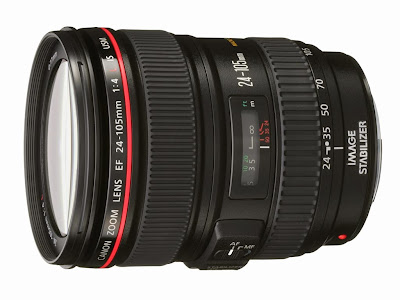 |
| Infinity Focusing |
What does Infinity Focus Mean?
In photography, infinity focus is when the lens forms a sharp image of an object an infinite distance away from the camera.
How Does Infinity Focus Work?
Infinity is the distance from which light rays striking the lens appear as parallel rays rather than diverging rays. Therefore when you are focused at infinity any objects located farther from the point of focus would also be in acceptable focus, there is no need to adjust focus. Thus Infinity on a camera lens is a point at which no more adjustment needs to be made for objects that are further away to be in focus.
The reason why this work is because when the camera lens is focused at a point very far away; the lens perceives the light rays as parallel rays as it is unable detect any further narrowing of the angle of the beams of light being focused. So anything from infinity onwards will be in focus as far as the lens is concerned.
When would I want to use infinity focus? What's its purpose?
Infinity focus is used for when shooting something that is hard to focus on especially at night or in dimly lit situations. Examples would be fireworks, a lightning storm (way off in the distance), astrophotography or distant landscapes.
How to focus at infinity?
Some lenses feature a distance scale and they have this infinity symbol printed on them. It is easy to set these lenses to infinity as all you have to do is align the focus to the infinity symbol. This is usually done by turning the lens focusing ring either all the way to the right or all the way to the left. As usual Nikon and Canon lenses work in opposite directions to each other.
Beware Some Lenses can Focus Beyond Infinity
 |
| How to Focus at Infinity |
Yes it is true some lenses could indeed focus beyond infinity. This is found mainly on moderately new lenses. The reason why lenses could focus beyond infinity is because the point of focus changes with amongst other things the temperature of the lens. So this feature is helpful to get accurate focus even if high temperatures distort the lens and shift the infinity focus-point.
Another reason for making lenses with travel beyond infinity is to make matters easier for the lenses auto focus mechanisms as additional travel beyond infinity makes sure that the AF motor will not bump against a hard stop while attempting to focus on infinity. This is reason why most Canon lenses go past the infinity mark.
For all lenses that just stop sharply at infinity setting infinity focus means to turn the focusing ring all the way to the right or the left (depending on camera make). Pay attention to the type of lens you are using if you are using a lens that could go beyond infinity you might need to turn the focusing ring all the way to the right or left (depending upon your camera make) and pull back the focus slightly to get it right at infinity.
How to manually set a lens without a distance scale to Focus on Infinity?
It’s much easier than you expected'
if its day time, just point the camera towards a distant object, a tree, post, or even clouds and let the camera auto focus. Once focus is achieved either lock focus or shift the lens to manual focus.
If it’s dark find a distant light source and focus on it, you could always use the moon if its visible, modern cameras auto focus systems are so good that they could easily focus on the planets or even the stars.
If in doubt, point your camera towards any distant light source, shift to live view, zoom your LCD display and turn focus ring till you get the light source in perfect focus.
Zoom Lenses and Infinity Focusing
One thing to remember while using infinity focusing on zoom lenses is that there are two types of zoom lenses Parfocal and Varifocal.
 |
| Canon EF 24-70mm f/2.8L II USM - Parfocal Zoom Lens |
Parfocal lenses do not shift focus when the focal length is changed. So once you have set a parfocal zoom lens to infinity you need not re adjust it even if you zoom in or out.
 |
| Canon EF 24-105mm f/4 L IS USM - Varifocal Zoom Lens |
Varifocal zoom lenses focus at infinity at different positions on the focus mechanism depending on the focal length selected; so if focal distance is changed you need to re adjust the focus.
Post a Comment